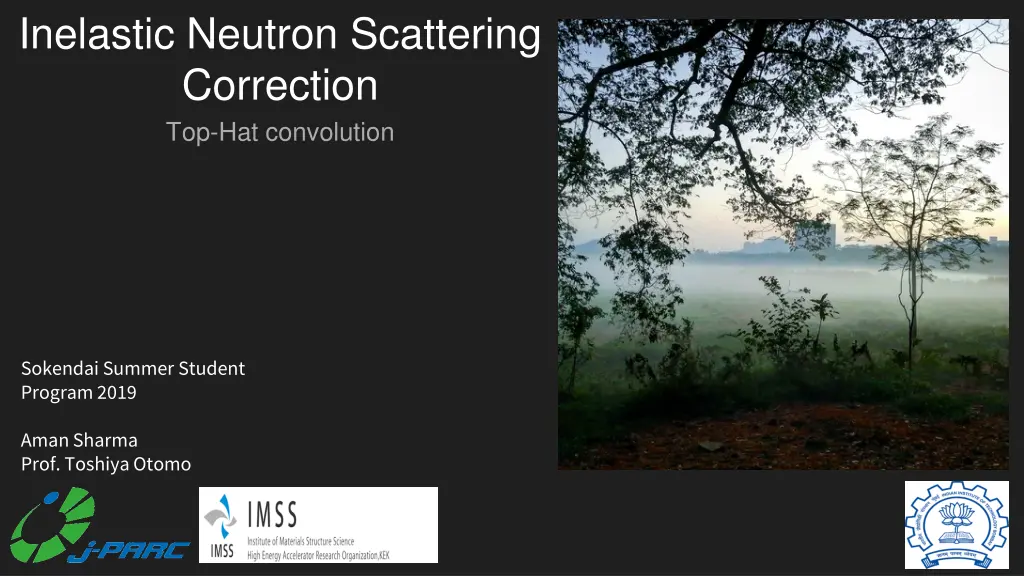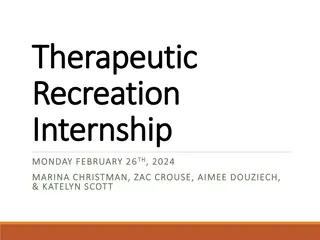
Understanding Material Structures with Neutron Scattering
Explore the world of structural analysis using neutron scattering techniques to uncover the properties of materials like single crystals, powders, and liquids. Discover the benefits of neutron over X-ray for studying hydrogen-rich materials. Dive into total scattering experiments, structure functions, and pair correlations, and delve into the fascinating properties of materials like water, metallic hydrides, and biomolecules.
Download Presentation

Please find below an Image/Link to download the presentation.
The content on the website is provided AS IS for your information and personal use only. It may not be sold, licensed, or shared on other websites without obtaining consent from the author. If you encounter any issues during the download, it is possible that the publisher has removed the file from their server.
You are allowed to download the files provided on this website for personal or commercial use, subject to the condition that they are used lawfully. All files are the property of their respective owners.
The content on the website is provided AS IS for your information and personal use only. It may not be sold, licensed, or shared on other websites without obtaining consent from the author.
E N D
Presentation Transcript
Inelastic Neutron Scattering Correction Top-Hat convolution Sokendai Summer Student Program 2019 Aman Sharma Prof. Toshiya Otomo
Structural Analysis The idea is to determine structure of materials by using neutrons as a probe. The material being examined could be a SINGLE CRYSTAL, POWDER or even LIQUID. Conventional crystallography deals with single crystals and uses Bragg s Law or equivalently Laue Condition. This represents the two inherent modes of looking at structure of a material in Real Space(r) or Reciprocal Space(Q). Thus in experiments X-rays or neutrons are used to map the reciprocal space and then converted to real space information.
Total Scattering Experiments Neutron source is a spallation source with wavelength range 0.12 to 8.3 The sample is placed in a container mostly made of Vanadium There are 4 detector banks for various 2 The measurements made are time of flight measurements(ToF) which are then used to calculate the momentum Knowing the final location the change in momentum(q) is calculated The aim is analyse the structure of hydrogen-rich material and the properties. Or, Investigation of origin of hydrogen- induced physical properties by analysis of atomic position, and hydrogen correlations, and approach from pair correlation in disordered system. Image Credits: http://mlfuser.cross- tokai.jp/en/bl21.html
Structure Function and Pair Correlation Density The total scattering structure function is what we get from our experiments which is: While the pair correlation is defined as: And the relation between the two is given by:
But why neutrons?... As stated earlier the aim is to understand the properties of hydrogen laden materials.The problem with X- rays is, the tiny cross section it has with hydrogen as compared to the other atoms it might have in the material. Another benefit of using neutron is the much larger wavelength range providing better resolution. For the same wavelength(1 ) the energies are: Neutron - 81.8meV X-ray - 12.4keV
Some materials Water: Water has a lot of interesting properties that we can learn about from understanding the structure, for example why is its density highest at 4 , inter-molecular lengths and even how the structure affects the interaction of water with other molecules. Metallic-Hydrides: Image credits: https://i.stack.imgur.com/AWXg1.gif Metallic-hydrides are of particular interest because their varied applications due to properties like superconductivity and hydrogen storage capacity. Neutron energy used is about the same as the excitation energy for the phonons/magnons and thus inelastic scattering can be used to study them. Biomolecules: Biomolecular structure can be studied directly giving insight to the functionality of the molecule, especially in case of proteins where the structure is key to understanding its
Scattering: Scattering can be 4 kinds: I) Elastic A) Coherent II) Inelastic B) Incoherent Elastic collision/scattering are those in which there is no energy exchange between the colliding the particles, thus inelastic being the one in which there an exchange. While coherent scattering is one in which the incident and final/scattered wave have a definitive phase relation, opposed to incoherent in which there is no such relation. Eg: Bragg peaks - Elastic and coherent Laue monotonic diffuse scattering - Elastic and coherent Incoherent cross section of nuclear scattering - Coherent and inelastic Compton Scattering - Inelastic and incoherent
Inelastic collisions: One of the problems with neutron scattering experiments to locate hydrogen positions is the similarity in the masses of the particles. This causes significant momentum transfer between the two, especially low momentum neutron. This inelastic scattering has to be taken into account and needs to be corrected for. There are a few ways of doing so, the most used being Model based: In which one essentially models the inelastic collision calculates the inelastic contribution and corrects that from the total Top-Hat convolution: This method has more general applicability, but certain underlying assumptions that may not always hold
Top- Hat Convolution Requirement for correction: Background maybe Qedependent. But does not contain any structural information Background when Fourier Transformed to real space gives unphysical structures in low-r region The idea is to form a pseudo self-scattering function by convolving the measured intensity with the top-hat function. After the convolution we can get the pair correlation by removing this part from the measured data.
Results: As one can see from the graph. There is a significant change to the Self-correlation function with regard to the truncation oscillations. Image credits: Inelasticity corrections for time-of- flight and fixed wavelength neutron diffraction experiments A.K. Soper - Molecular Physics Vol. 107, No. 16, 20 August 2009, 1667 1684
Sources and References: 1. Underneath the Bragg Peaks Structural Analysis of Complex Material by T. Egami and S.J.L. Billinge Total scattering / PDF: Theory and practice Andrew Goodwin September 2017(https://www.oxfordneutronschool.org/2017/Lectures/Goodwin%20- %20Total%20Scattering.pdf) Inelasticity corrections for time-of-flight and fixed wavelength neutron diffraction experiments A.K. Soper - Molecular Physics Vol. 107, No. 16, 20 August 2009, 1667 1684 The Oxford Solid State Basics by Steven H. Simon 2. 3. 4.






















